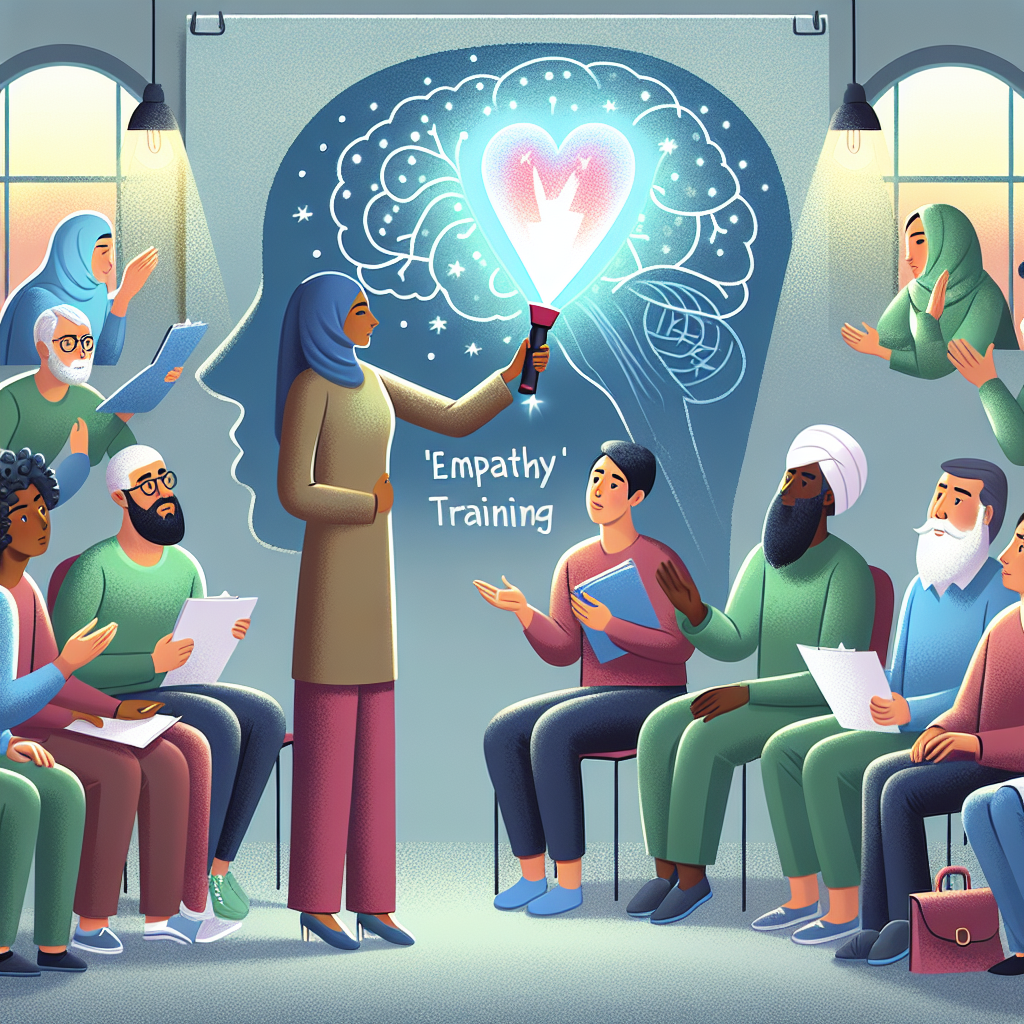
Introduction
In today’s fast-paced corporate landscape, an extraordinary shift is taking place in how organizations approach leadership. Gone are the days when strict hierarchies and stiff hierarchal structures reigned supreme. Enter a new paradigm: empathy. This article, titled "Empathy Training: The Ultimate Game Changer for Leadership Development," highlights the pressing need for empathetic leadership and how training in this domain can empower organizations to foster stronger teams, improve employee satisfaction, and elevate overall performance.
Imagine a workplace where leaders understand, resonate with, and support their employees’ feelings and perspectives. Sound revolutionary? It is indeed! Empathy training equips leaders with the skills to connect meaningfully with their teams, paving the way for transformative leadership that prioritizes emotional intelligence over command-and-control styles.
As we dive deep into the nuances of empathy training and its implications for leadership development, prepare to explore compelling case studies and actionable insights that will not only educate you but also inspire a shift in your own leadership mindset.
Why Empathy Matters in Leadership
Understanding the Basics
To understand why empathy is pivotal in leadership, we first need to define it. Empathy involves the ability to step into another person’s shoes, to truly understand their feelings, thoughts, and experiences. In a leadership context, this translates to being attuned to team members’ emotional states and using that understanding to guide decision-making and foster a supportive work environment.
The Psychological Impact
Statistics reveal that empathetic bosses significantly reduce employee turnover, enhance job satisfaction, and improve productivity. According to a study by the Center for Creative Leadership, 70% of employees identify their work environment as the most significant factor in their overall job satisfaction. Empathy training contributes to creating a supportive culture, which in turn bolsters retention rates and mitigates the cost of hiring and training new talent.
Case Study: Salesforce
Salesforce embarked on an empathy training initiative aimed at cultivating a more inclusive and supportive workplace. As part of their “Ohana Culture,” executives undergo empathy training to refine their leadership skills. The results? Employee satisfaction scores skyrocketed, and the company has consistently rated as one of the best places to work. This initiative showcases how integrating empathy into leadership can unleash remarkable employee engagement and loyalty.
The Mechanics of Empathy Training
Components of Effective Empathy Training
Empathy training is not just a fad; it is a structured approach integrating various components:
Active Listening: Leaders are trained to listen more than they speak, ensuring they understand employees’ concerns.
Perspective-Taking Exercises: These exercises help leaders view situations from their team members’ viewpoints, fostering a deeper understanding.
- Scenario-Based Learning: Employing real-world scenarios encourages leaders to apply empathy in practical contexts, solidifying their learning.
Implementing Empathy Training
Implementing empathy training in a business isn’t just about workshops or retreats. Here are essential steps organizations can take:
Assessment of Current Culture: Identify gaps in emotional intelligence and areas requiring improvement.
Curriculum Development: Develop a curriculum that stresses the importance of empathy, combining theoretical knowledge with practical exercises.
- Ongoing Evaluation: Regular follow-ups and feedback collection to assess the effectiveness of training programs.
Case Study: Google
Google employs a unique approach to empathy training through its “Search Inside Yourself” program. This mindfulness-based technique aims to enhance emotional intelligence alongside empathy. Leaders who have undergone this program reported decreased stress levels and improved team dynamics, showcasing the effectiveness of integrating mindfulness with empathy training.
The Ripple Effects of Empathy Training on Leadership Development
Building Trust and Transparency
When leaders practice empathy, it fosters trust among team members. A transparent work environment encourages open communication, ultimately leading to more innovative ideas and problem-solving.
Table 1: Impact of Empathy on Trust and Communication
| Factor | Pre-Empathy Training | Post-Empathy Training |
|---|---|---|
| Trust in Leadership | 55% | 85% |
| Open Communication | 60% | 90% |
| Team Collaboration | 50% | 80% |
Enhancing Team Performance
Empathy training not only improves interpersonal relationships; it significantly impacts team performance. Teams led by empathetic leaders experience increased cooperation and morale.
Case Study: Zappos
Zappos is renowned for its customer service, but what often goes unnoticed is its commitment to employee happiness through empathetic leadership. The company integrates empathy training as part of its core values. Employees are encouraged to live out these values—resulting in a work environment where individuals feel valued, leading to exceptional customer service and an increase in overall brand loyalty.
Key Challenges in Empathy Training
While the benefits are immense, organizations may encounter hurdles when implementing empathy training. Resistance may stem from long-entrenched traditional leadership styles or lack of awareness regarding the importance of emotional intelligence.
Addressing Resistance
Organizations must approach empathy training with sensitivity and clarity. Engaging leadership buy-in is crucial, as leaders set the tone for organizational culture.
The Future of Leadership Development
Shifting Paradigms
As organizations embrace remote work and diverse teams, the need for empathy will only intensify. Empathy training will evolve, utilizing technology to create virtual reality scenarios or online training programs that enhance the learning experience.
Trends on the Horizon
Integration of AI in Empathy Training: AI tools can help simulate real leadership challenges requiring emotional intelligence.
- Data-Driven Approaches: Metrics to measure emotional intelligence skills in leaders will help organizations quantify the impact of empathy training.
Conclusion
In summary, empathy training is no longer just a “nice-to-have” in the realm of leadership development; it’s an essential, game-changing tool that can transform workplaces into environments of engagement, satisfaction, and productivity. As businesses strive to meet the demands of a rapidly changing world, cultivating empathetic leaders will be vital.
It’s time for organizations to invest in empathy training to unlock the full potential of their leadership candidates. By fostering emotional intelligence, leaders not only boost team morale but also set the foundation for a thriving, innovative culture that is prepared to tackle the future.
Actionable Takeaway
Empower your leadership today by prioritizing empathy training. Set aside an hour this week to outline an empathy training plan for your organization. Remember, the journey to effective leadership begins with understanding—not just your role, but the people you lead.
FAQs
1. What is empathy training?
Empathy training is a structured approach aimed at enhancing emotional intelligence and the ability to understand and share the feelings of others, particularly in a leadership context.
2. How can empathy training improve employee satisfaction?
Leaders trained in empathy are better equipped to support their team, leading to heightened employee engagement, trust, and satisfaction.
3. What are some activities involved in empathy training?
Common activities include active listening exercises, role-playing scenarios, and perspective-taking exercises designed to cultivate an empathetic mindset among leaders.
4. How can I measure the effectiveness of empathy training?
Organizations can measure effectiveness through surveys pre- and post-training, employee turnover rates, and overall team performance metrics.
5. Is there any scientific research backing the benefits of empathy training?
Yes, various studies have shown that organizations with empathetic leadership demonstrate higher employee satisfaction, better teamwork, and improved overall performance.
By focusing on the holistic development of leaders through empathy training, organizations are well on their way to not only leading effectively but also fostering a healthier and more productive workplace. Embrace empathy—it could very well be the key to your organization’s success.
















